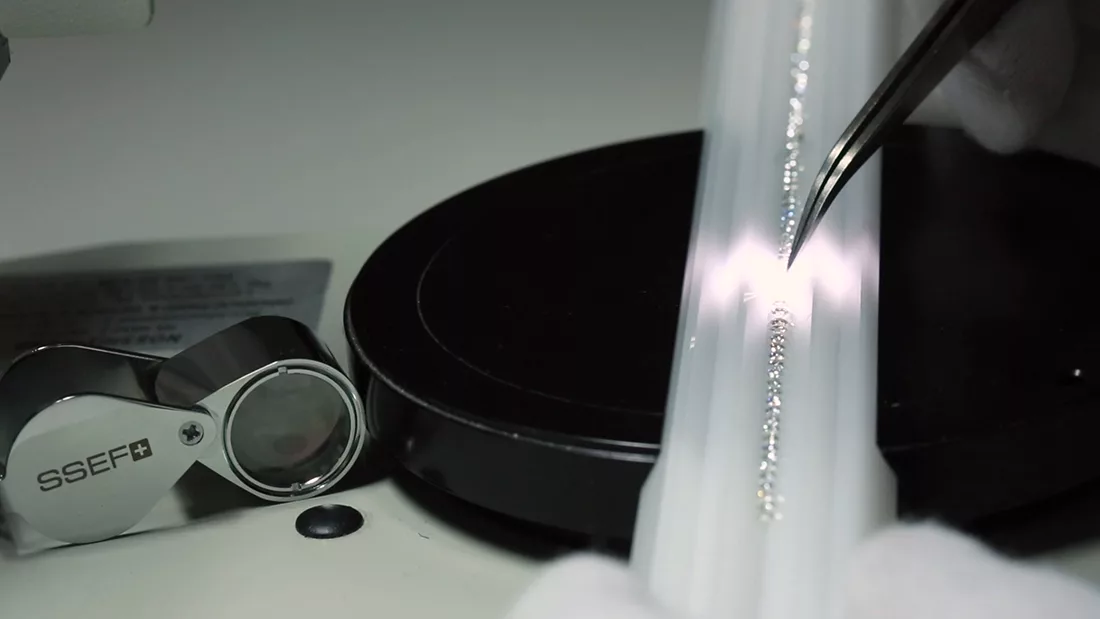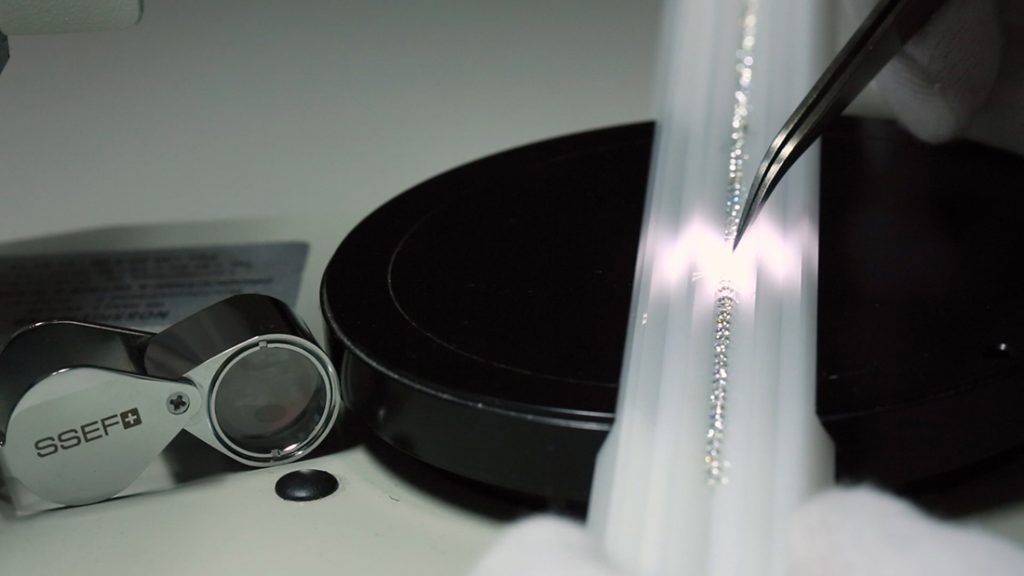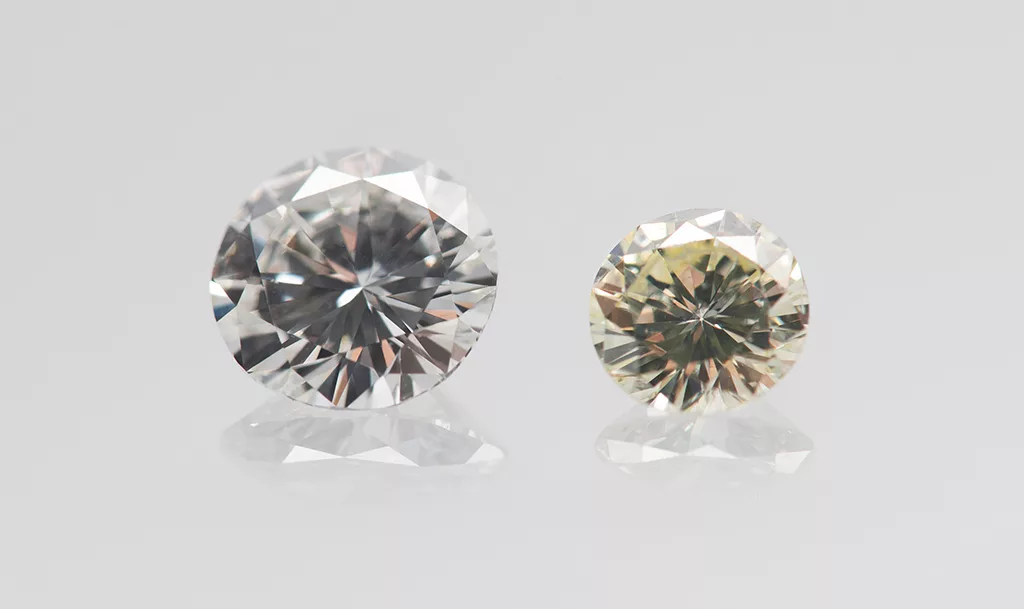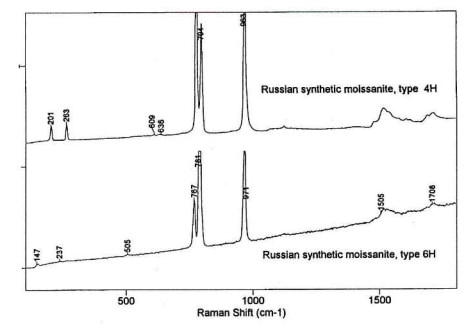
Undisclosed natural diamonds mixed in a parcel of synthetic diamond
by J.-P. Chalain, first published in Facette 22 (February 2016)

In 2016, our Diamond Department acquired a parcel of small colourless synthetic diamonds produced in Europe by the HPHT method. The complete study of these series of melee size synthetic diamonds (SSEF Research project 80602) is part of our continuous survey of new productions of stones that may possibly be tested by the ASDI instrument.
The total weight of the purchased parcel is 0.59 ct, consisting of 52 round brilliant polished stones, their diameters ranging from 0.84 mm to 2.15 mm. Their declared colours range from D/E to G/H and their declared clarities range from VVS to SI.
The SSEF standard procedure for this kind of study consists of the traditional observations both with a gemmological binocular and under the SWUV & LWUV lights. FTIR analyses are conducted using a Bruker LUMOS micro-infrared spectrometer and Photoluminescence analyses at low temperature are induced by the green laser of a Renishaw Raman spectrometer. Finally, the screening of the parcel is performed with the ASDI instrument for both its Raman detectability and its SWUV transparency.
Various analyses showed that among the 52 stones there was indeed no diamond-simulant. But surprisingly the one-phonon infrared absorption region of 7 diamonds shows inconsistent features with synthetic diamonds: concentrations of aggregated nitrogen atoms in the form of A and B aggregates over 1’000 ppm, very high platelets peaks, no C-centres, one sample even shows only B aggregates. In fact, these are natural diamonds mixed in a parcel of synthetics. The natural origin of these 7 diamonds was further confirmed by photoluminescence analyses. Additionally, these 7 natural diamonds absorb SWUV light and therefore are correctly identified by the ASDI instrument as natural diamonds.
We announced to the supplying synthetic diamond producer the unexpected presence of natural diamonds among the parcel of synthetic diamonds that he delivered. He immediately apologized and admitted that being ‘only’ a European synthetic diamond producer, his company subcontracts the polishing operations of his rough synthetic diamonds to an Asian cutting factory and consequently he has no control over the goods that he receives back before delivering the final orders of polished stones to his clients.
The presence of undisclosed natural diamonds in a parcel of synthetic diamonds has two unusual consequences:
- Assuming that some polished synthetic diamonds are exchanged (intentionally or not) with natural diamonds in some Asian polishing factories, these synthetic diamonds may be reintroduced into other parcels (intentionally or not) at a later date
- Unaware gemmologists that would order synthetic diamonds and would instead be delivered with partially natural diamonds might consider these natural diamonds as references for synthetic diamonds, which would later create critical confusion in terms of their gemmological identification.
Want to learn more about diamonds?

Sign up for our free online course: Introduction to diamonds

